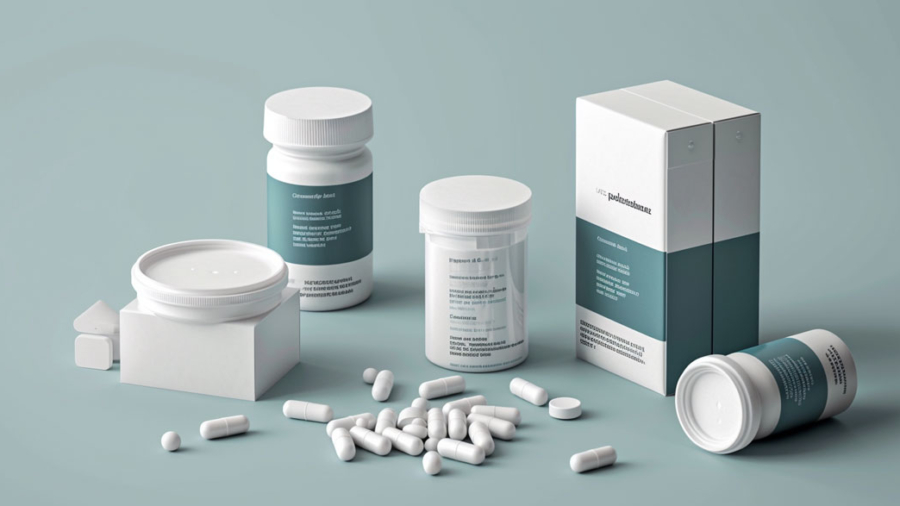Introduction: creative medicine box design
In the world of medicine, design plays a pivotal role in not only the visual appeal of packaging but also the overall user experience. Creative medicine box packaging design can transform a mundane pill bottle into a work of art while ensuring the safety and effectiveness of the enclosed medication. In this article, we will explore the fascinating intersection of design and medicine, delving into innovative medicine box design ideas that are both fashionable and functional.
Why should you read this article? Well, whether you’re a designer looking for inspiration, a patient interested in a better medication experience, or simply curious about the latest trends in medicine packaging, this article has something for you. We’ll cover a wide range of topics, from the importance of creative packaging in the pharmaceutical industry to the role of graphic design in medicine packaging. So, let’s dive in!
The Impact of Design on creative Medicine box Packaging
How does design influence the perception of medicine?
Design isn’t just about aesthetics; it’s about conveying a message and eliciting emotions. When it comes to medicine, design plays a critical role in shaping people’s perception of a product. A well-designed medicine package can instill confidence in the user, making them believe that the enclosed medication is of high quality and trustworthy.
Why is creative medicine packaging essential in today’s market?
In a crowded pharmaceutical market, creative medicine packaging sets products apart. It’s a competitive edge that can attract customers, build brand loyalty, and communicate the unique qualities of a medication. Innovative packaging can also improve adherence to prescribed regimens, ultimately benefiting patient health.
Inspiration in Unexpected Places
Where can designers find inspiration for medicine packaging?
Designers often seek inspiration in unusual and unexpected places. We’ll explore some unconventional sources of inspiration that can lead to groundbreaking medicine packaging designs. Whether it’s drawing from nature, architecture, or cultural elements, creative ideas can emerge from the most unexpected places.
What are some examples of innovative medicine packaging designs?
We’ll showcase real-world examples of medicine packaging that have taken creativity to the next level. From interactive packaging that engages users to designs that simplify dosage tracking, these examples will demonstrate how innovative solutions can enhance the user experience.
The Patient-Centric Approach
How can medicine packaging be designed with the patient in mind?
Patient-centric design prioritizes the needs and preferences of the end-users – the patients. We’ll delve into the principles of patient-centered medicine packaging, from user-friendly features to clear labeling. Designing with empathy for patients can lead to improved adherence and better health outcomes.
What features enhance the user experience for patients?
Patients often struggle with opening medicine containers, reading instructions, or remembering dosages. We’ll discuss innovative features and design elements that can address these common challenges, making it easier for patients to manage their medications.
The Power of Graphic Design
How does graphic design contribute to effective medicine packaging?
Graphic design goes beyond aesthetics; it communicates information and reinforces branding. We’ll explore how effective graphic design can convey important details, such as dosage instructions, warnings, and usage guidelines while maintaining a cohesive and visually appealing package.
What role do logos and illustrations play in medicine packaging?
Logos and illustrations are powerful tools for creating brand recognition and enhancing the visual appeal of medicine packaging. We’ll discuss the significance of these elements and provide tips for creating memorable and impactful logos and illustrations.
Small but Significant: Supplement Packaging
Why is packaging for supplements unique?
Supplement packaging differs from traditional medicine packaging in several ways. We’ll examine the distinct challenges and opportunities that designers face when creating packaging for dietary supplements, vitamins, and other health products.
What are some creative supplement packaging design ideas?
Discover innovative design ideas that cater specifically to the supplement market. From showcasing the purity of ingredients to emphasizing health benefits, we’ll explore ways to make supplement packaging both informative and visually appealing.
Keeping It Professional
What are the key elements of professional medicine packaging design?
Professionalism is crucial in medicine packaging design, as it instills trust and reliability. We’ll outline the essential elements that contribute to a professional appearance, including typography, color choices, and layout considerations.
How does professionalism affect brand perception?
A professional and well-executed design can significantly impact how a brand is perceived by consumers. We’ll discuss the relationship between professionalism in design and the trustworthiness of a brand, highlighting the importance of consistency and quality.
The Latest Trends in Medication Packaging
What are the newest developments in medicine box design?
Stay up-to-date with the latest trends in medication packaging. From sustainable packaging materials to smart packaging solutions, we’ll explore the innovations shaping the future of medicine packaging design.
How can brands stay up-to-date with the latest trends?
Discover strategies that pharmaceutical companies can implement to ensure their medicine packaging remains relevant and competitive in a rapidly evolving market. Adapting to emerging trends can keep brands at the forefront of innovation.
Digital Marketing in Medicine Packaging
How does digital marketing complement traditional packaging design?
In the age of digital technology, online presence and marketing strategies are crucial for brand success. We’ll explore how digital marketing complements traditional packaging design, allowing brands to connect with their audience and drive engagement.
What strategies can companies use to connect with their audience?
From social media campaigns to interactive augmented reality experiences, we’ll discuss innovative ways companies can leverage digital marketing to engage with consumers and create lasting brand connections.
Locking in Safety and Quality
Why is security an important aspect of medicine packaging design?
Ensuring the safety and integrity of medications is paramount. We’ll delve into the security measures that can be integrated into medicine packaging design to protect against tampering and counterfeiting.
How can packaging protect the quality and integrity of the medication?
Learn about packaging solutions that go beyond aesthetics to safeguard the quality and effectiveness of medication. From moisture
-resistant packaging to child-resistant closures, we’ll explore the features that promote medication safety.
Summary: Designing a Healthier Future
In summary, creative medicine packaging design plays a pivotal role in the pharmaceutical industry, influencing the perception of medications and enhancing the overall user experience. Whether it’s finding inspiration in unexpected places, designing with patients in mind, or staying up-to-date with the latest trends, design is a powerful tool in the world of medicine.
As designers, pharmaceutical companies, and consumers, we all have a stake in the way medicines are presented and accessed. By embracing innovative design ideas and prioritizing user needs, we can collectively work towards a healthier future where medicine is not only effective but also fashionable and user-friendly. Design matters, and in the world of medicine, it can make a significant difference.
Brand guidelines are a set of rules and standards that dictate how your brand is presented to the world. They are important because they ensure consistency in your brand’s image, messaging, and visual elements across all communication channels.
A strong brand identity can help your business stand out from the competition, attract the right target audience, build trust and loyalty, and ultimately drive business success.
Brand personality refers to the human traits and characteristics associated with a brand. It helps create an emotional connection with the audience, differentiate the brand from competitors, and influences consumer purchasing decisions.
The different elements of a brand identity typically include the brand name, logo, color palette, typography, imagery, and brand messaging.
Hiring a freelance brand identity designer can offer more flexibility, personalized attention, and cost-effectiveness compared to hiring a design agency.
A strong brand image can help your business create a positive perception in the minds of consumers, build brand recognition, and differentiate your products or services in the market.
Brand recognition is important as it can lead to increased customer loyalty, repeated business, and a strong competitive advantage in the marketplace.
A brand’s color palette is essential in evoking emotions, creating visual interest, and establishing a memorable brand identity that resonates with the target audience.
Brand guidelines provide clear instructions and standards for the use of logo, colors, typography, and other visual elements, ensuring consistent brand representation across all platforms and marketing materials.
Subscribing to a brand design and marketing service can provide access to professional expertise, fresh perspectives, and ongoing support to continually enhance and evolve your brand’s image and presence.


